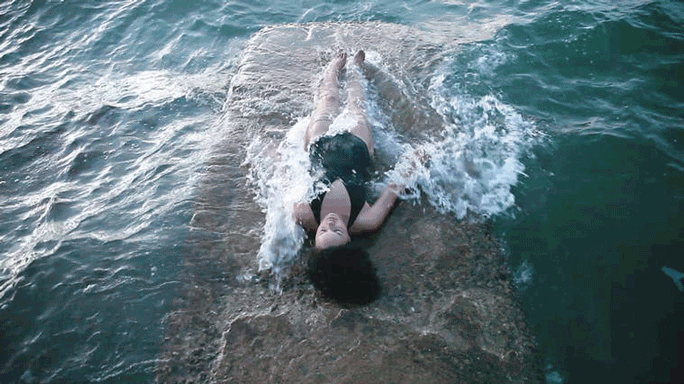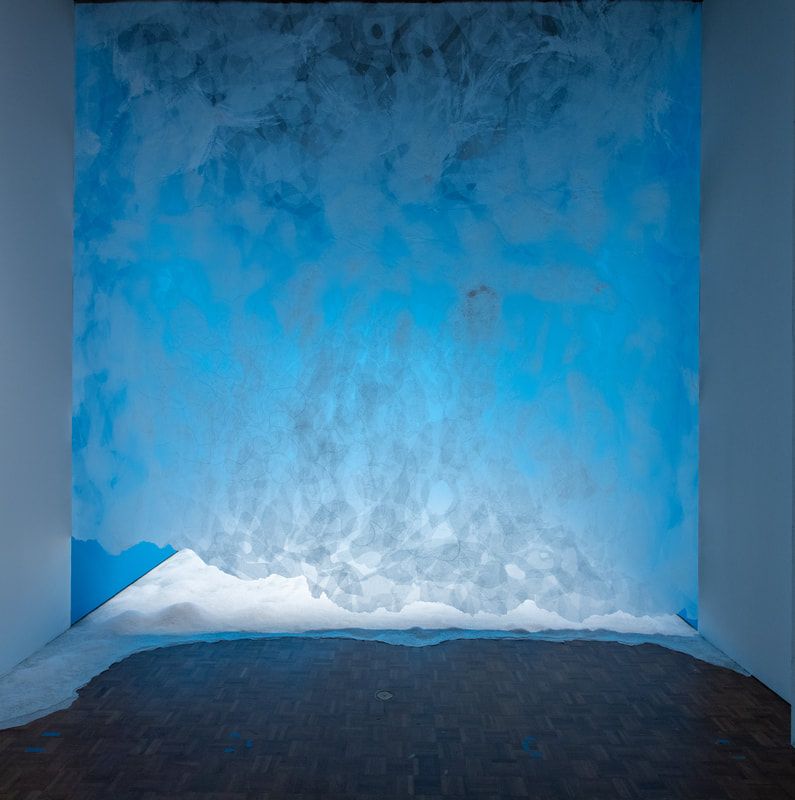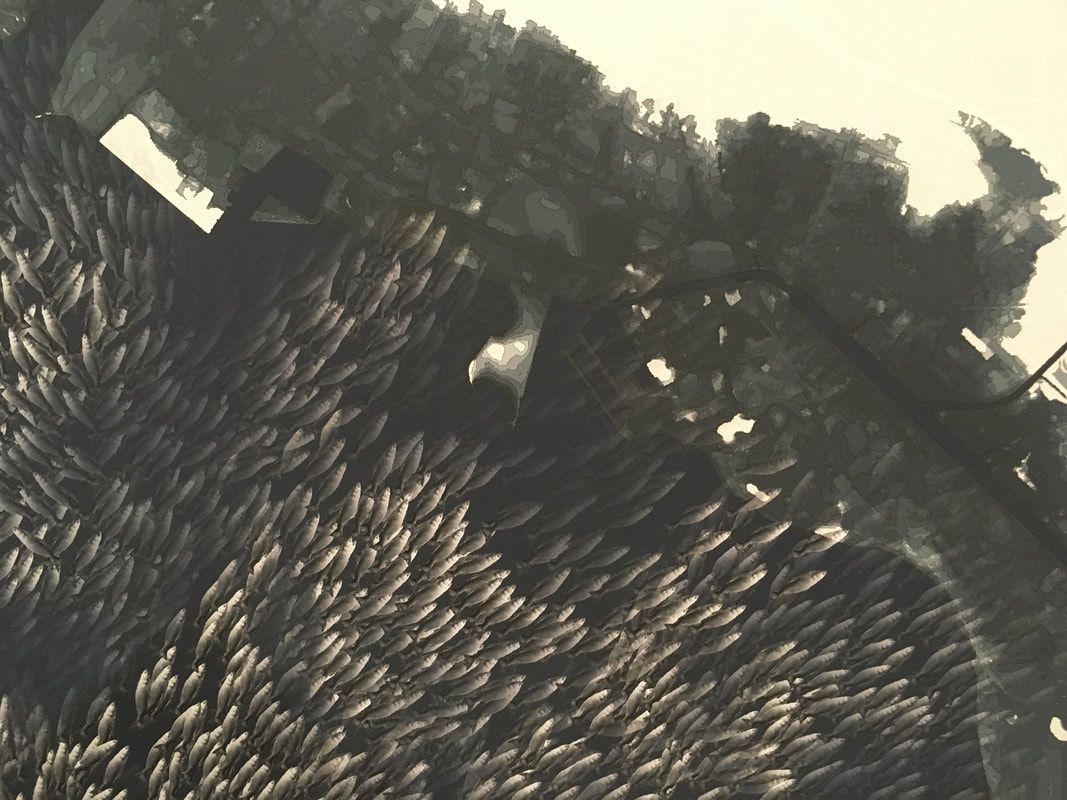For indigenous communities across the world, climate change is an immediate threat. Rising ocean levels threaten livelihoods, while intense storms and mined coral reefs decimate local knowledge and cultural traditions. Already facing cultural invasion and economic pressures, experts say that the increasingly unpredictable climate will “exacerbate the difficulties” that many indigenous coastal communities already face. In response, nine artists have opened an exhibit that encourages the public to prioritize the fight against climate change. Their project, called INUNDATION, is a collaboration between science and art that helps the audience visualize, process, and understand environmental data. INUNDATION also explores links between colonialism and climate change, covering rising sea levels, storms, mining coral reefs, as well as the loss of local and indigenous knowledge.
Held in a single room within the Mānoa Art Gallery, INUNDATION is a tribute to the widespread anxiety created by climate stressors. The exhibition’s signature piece – a photo from Angela Tiatia’s 2015 film Holding On – is a woman surrounded and dwarfed by a rising tide. The image evokes fear and is a clear allegory for the uncertainty that unchecked climate change holds. However, INUNDATION isn’t just a reflection of humanity’s climate change anxiety. Each artist featured in the collection explores the relationship between colonialism and climate change as well as their views on climate justice.

As historian Richard Drayton explains, colonialism continues to exhibit a lasting impact on the environment. Mangroves, grasslands, rainforests, and wetlands were cleared to make for settlements; resources were mined for profit. As Jenny Hamilton Ferris, INUNDATION’s curator, explains, this practise has persisted for the last 300 years and its effects can be felt well into the twenty-first century. Today, U.S., Chinese, Australian, and European companies fight over sea walls, land infrastructure, and geoengineering contracts throughout the Pacific. In Singapore, water and food sovereignty are ignored in favour of construction. According to the UN, native populations are the first to face the consequences of climate change, as their livelihoods and cultures often rely on the environment. INUNDATION seeks to raise awareness and imagine a future free of colonial influence.
While many people are reluctant to acknowledge the connections between colonialism and climate change, INUNDATION welcomes such discourse. The artists’ work seeks to break down cultural stereotypes and foster discussions of a post-climate change future. INUNDATION accomplishes its goal by relying on the repeated motif of water. According to their website: “The aesthetics of water is a dominant feature in the art of INUNDATION. The experience of being surrounded by water, the experience of wading in lo’i kalo of being moved by ocean currents, shifted in its tides—and thriving—can open new conversations about what inundation means.”
While the term inundation means “an overwhelming abundance,” INUNDATION refers to “both the watery disasters of climate change and the overwhelming emotions they evoke.” Mary Babcock’s Lotic Sea is a reference to freshwater melt in Greenland and Antarctica. Constructed from wax paper and set against blue lights, the viewer drifts between images of melting ice and rising sea levels.

On the other hand, Kaili Chun’s HŪ MAI, ALA MAI invokes Hawaii’s not-so-distant future: the collages feature projected shorelines in Waikīkī (bottom), Honolulu airport (middle), and Marine Corps Base Hawaii’s Kāneʻohe Bay (top). Chun draws heavily from the past, using schools of ‘o‘opo, awa (milkfish), and ‘ama‘ama (mullet) to illustrate how Hawaii’s past may soon become its future.

While INUNDATION was created to spur the public into action, it also provides insight into how the world might survive climate change. Jaimey Hamilton Farris, INNUNDATION’s curator, has this to say about the exhibit: “At the invitation of these artists, we can engage in our complex emotional responses to climate change—not just overwhelming frustration, sadness, and anger, but also active hope and connection.”
